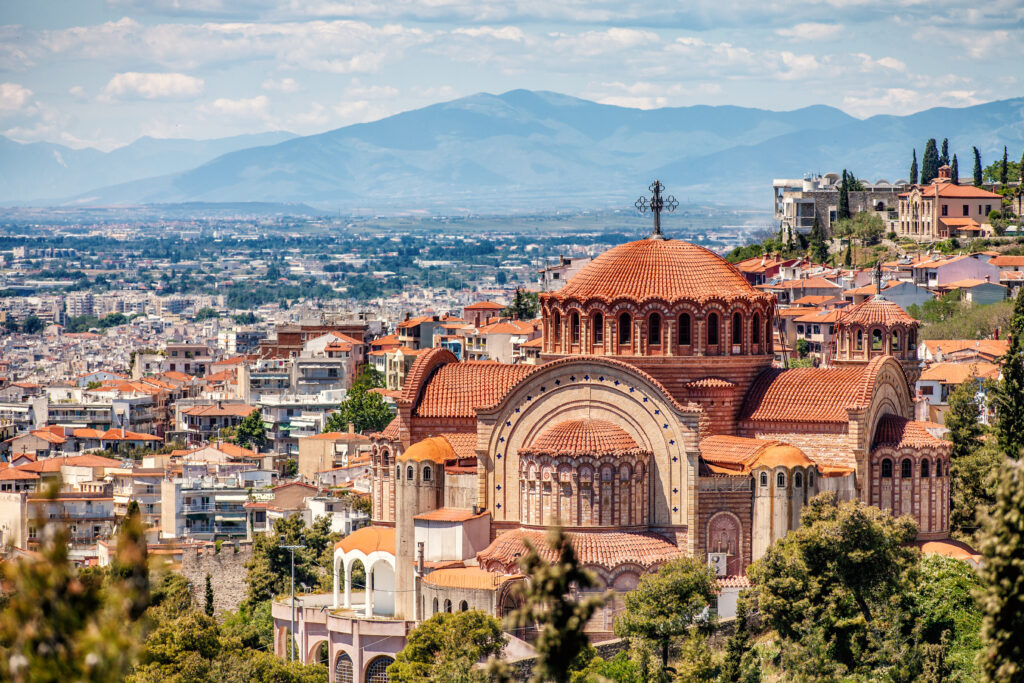
Thessalonica is a very pleasant destination, very popular with art lovers and a great place to go for a cheap vacation. With dozens of museums and no fewer than 15 early Christian and Byzantine monuments listed as Unesco World Heritage sites, this metropolis of one million inhabitants, capital of Macedonia, is an open-air history book. On the coastal promenade known as "paralia", the statue of Alexander the Great bears witness to the close ties between the city and the king. And the story continues to be written today. Here's a closer look at the must-sees in a city that blends culture and gastronomy in the heart of Greece, and which intends to rival the capital Athens. An ideal introduction before continuing on to discover our 17 most beautiful places to see in Greece.
1. The White Tower
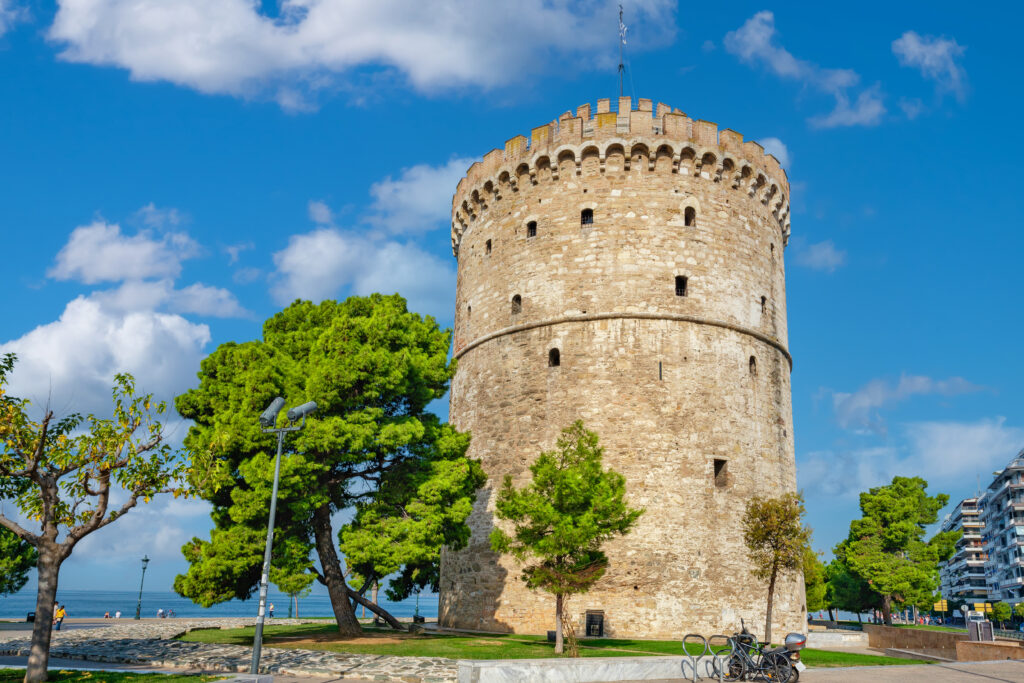
Emblematic of the city, the White Tower was once used as a prison during the Turkish period, where janissaries, the sultan's guards, were locked up in case of treason or disobedience. Today, inside the tower, you can explore an interactive museum retracing the city's history, equipped with well-designed touch screens and videos. Unfortunately, the panels and videos are not translated, which makes the English-language audioguide, available free at the entrance, very useful. From the top floor, you can also enjoy a magnificent panoramic view of the city and port. Not to be missed! We also recommend booking a local guide right here , who will take you on a fully personalized private walking tour of Thessaloniki.
2. The city walls of Thessalonica
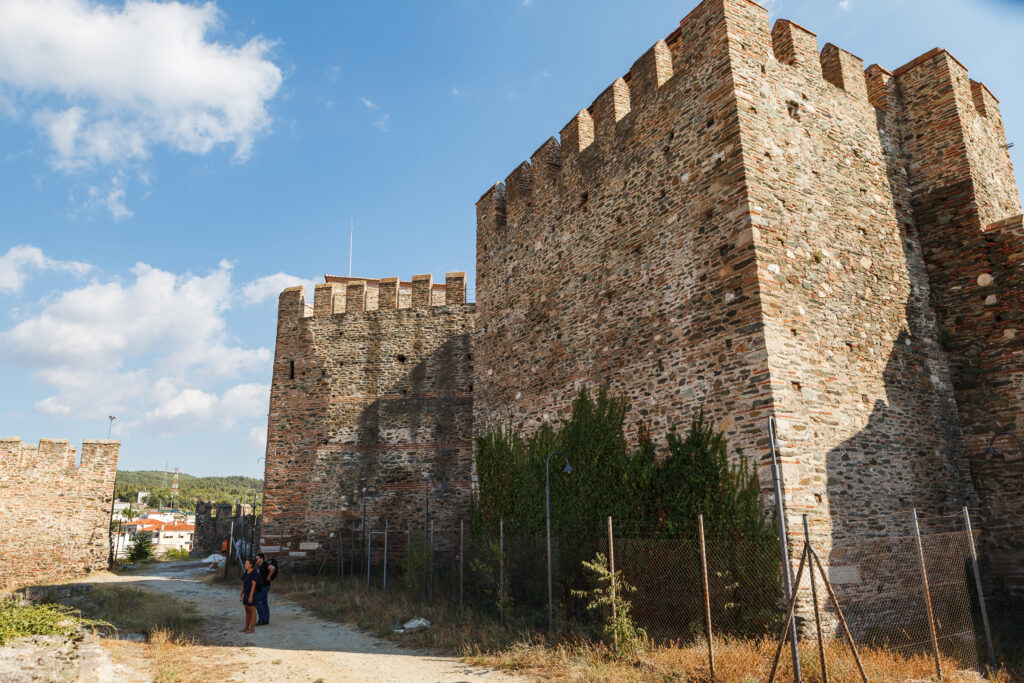
The ramparts that dominate the heights of the city, one of our 5 must-visit cities on your Greek vacation, date back to medieval times. However, the walls contain elements from earlier monuments and fortifications, whose origin can be attributed with some uncertainty to the period of Cassandra's first ramparts. The building of these walls is attributed to the Roman emperor Theodosius I and the Persian Hormisdas. These fortifications were built to complement the Roman wall, reinforcing each other's defense. Numerous towers were also built at this time (60 of which can still be seen today), placed at regular intervals to reinforce the ramparts and protect the particularly vulnerable lower town. The perimeter of the fortifications extended for up to 7 km, but only 3 km are still visible today. The walls can reach up to 10 meters in height. The Tour Blanche is certainly the most imposing part of these ancient fortifications.
3. What to do in Thessalonica Visit Old Thessalonica
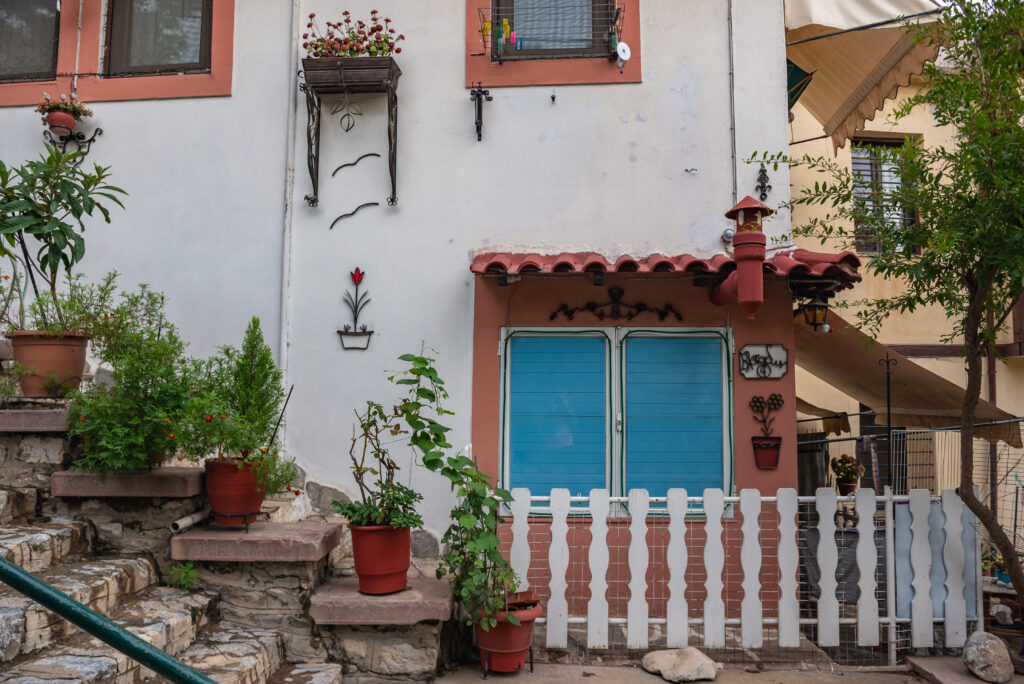
Perched on a hill, the upper town partially survived the fire of 1917. Here, you'll find ancient Ottoman-style buildings, recognizable by their timber framing, as well as Macedonian-style buildings, characterized by their colorful walls. Between these buildings, you'll find ruined houses and modern dwellings that sometimes imitate the old style. Ano Poli stretches out on either side of the northern ramparts, which are generally well preserved: the north-western part is stepped, while the north-eastern part is straight, dominating the city. The district extends to the Ottoman extensions of the fortifications, leading to the ancient Byzantine castle of the Seven Towers (Heptapyrgion), from which the name of the little district of Yedi Kule, meaning "seven towers" in Turkish, derives. This is where we suggest you start exploring the upper town. Must-sees include the Gate of Anne Palaeologus, the Trigonion and Andronic II towers, panoramic views and Byzantine World Heritage monuments such as the Vlatadon monastery, Agios Nikolaos Orphanos and Osios David churches, not to mention the pleasant steep streets.
4. The Galerius Palace complex
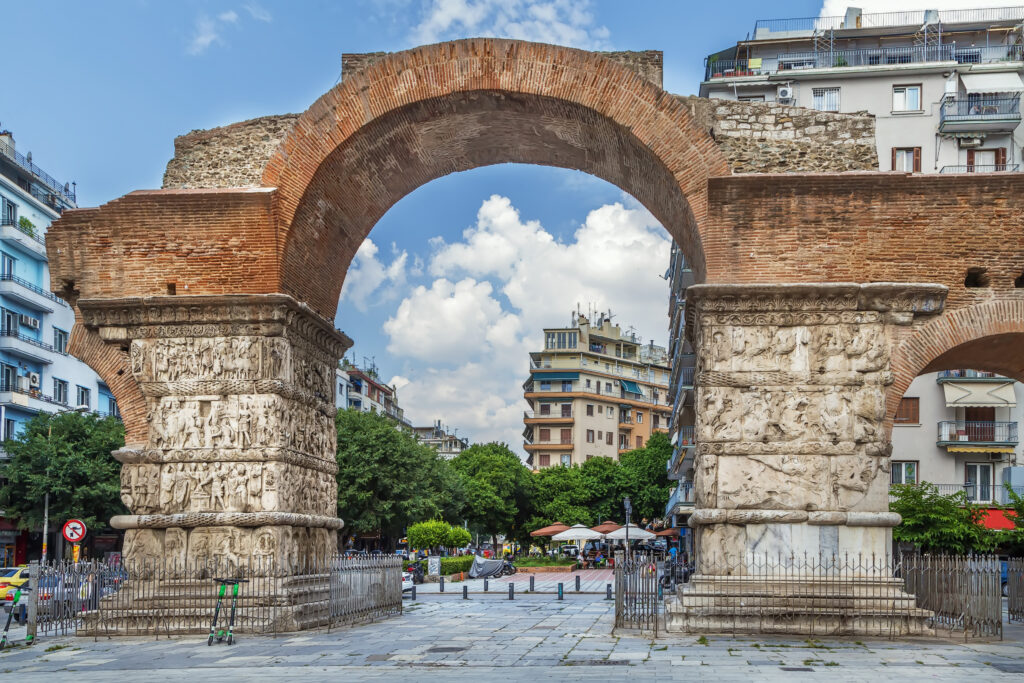
The complex houses various monuments such as the palace, the Arch of Galerius, the rotunda, the octagon and the hippodrome, all commissioned by the emperor Galerius. The first of these monuments is the Arch of Galerius, located between the palace and the rotunda. Erected to celebrate Galerius' victory over the Persians shortly before 305, it is located between Tsimiski and Prinkipos Nikolaou streets, at the level of the Triumphal Arch, where the ruins of Galerius' palace stand. Although only the south-eastern part of the palace has been preserved, these remains hint at the monumental proportions of the whole. The rotunda of St. George is the last monument in the complex. Research has established that it belonged to the vast palatial complex. The interior walls of the lower part were covered in marble, while the upper part was decorated with superb mosaics. Around 400, it was transformed into a Christian church, then, under Turkish rule, into a mosque.
5. The Museum of Byzantine Civilization

The first section of the Museum of Byzantine Civilization highlights sculpture and painting from the early Byzantine period. Here you can admire pieces such as the ambo from Philip's cathedral and fragments of mosaics by Saint Demeter. The second part focuses on the civil life of the inhabitants through the various periods of the Byzantine era. A must-see discovery is the immense mosaic revealed during the excavation of a villa in Thessalonica. The third part explores funeral rituals, from Paleochristian to Byzantine times. We discover how early Christians adopted and adapted pagan motifs in their funerary paintings. This section also features the reconstruction of a tomb from the eastern necropolis of Thessalonica, as well as a magnificent silver reliquary.
6. What to do in Thessalonica Aristotelous Square
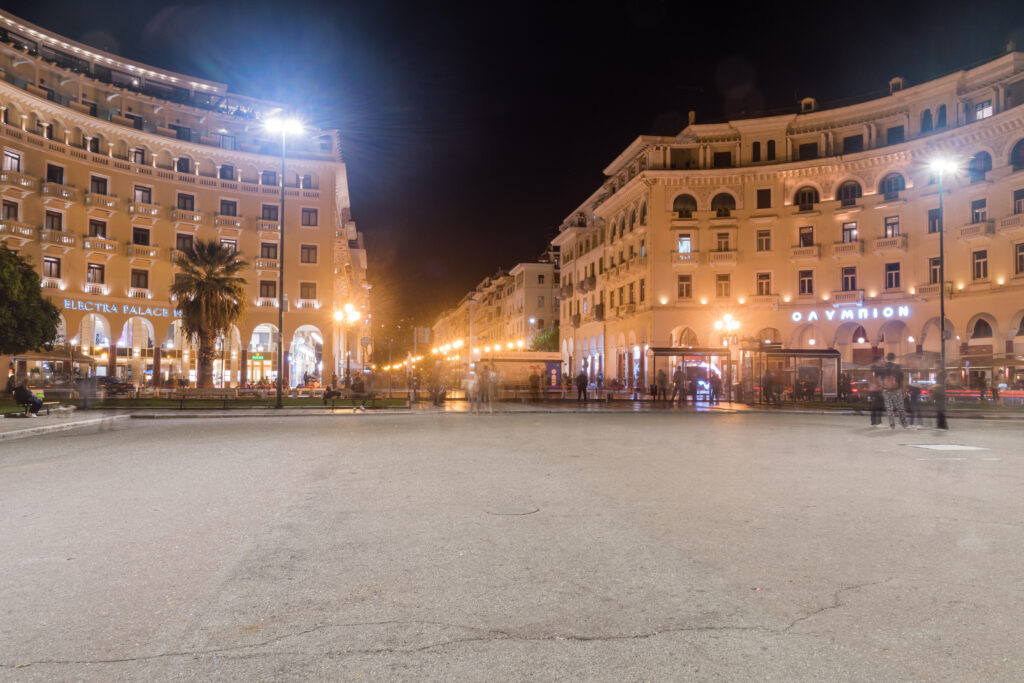
Architecturally speaking, this is undoubtedly the jewel of Thessaloniki, one of our 10 sun destinations less than 3 hours' flight from Paris. Aristotelous Square is an elegant esplanade that was completely redeveloped by French urban planner Ernest Hébrard after the great fire of 1917 devastated Thessaloniki. It bears the name of the great Macedonian philosopher, a native of the region and tutor to Alexander the Great. On a hot day, it's the ideal place to enjoy a cup of iced coffee while taking in the view. To the west, the elegant Electra Palace faces the Olympion cinema, which hosts an excellent international film festival every November.
7. The Archaeological Museum
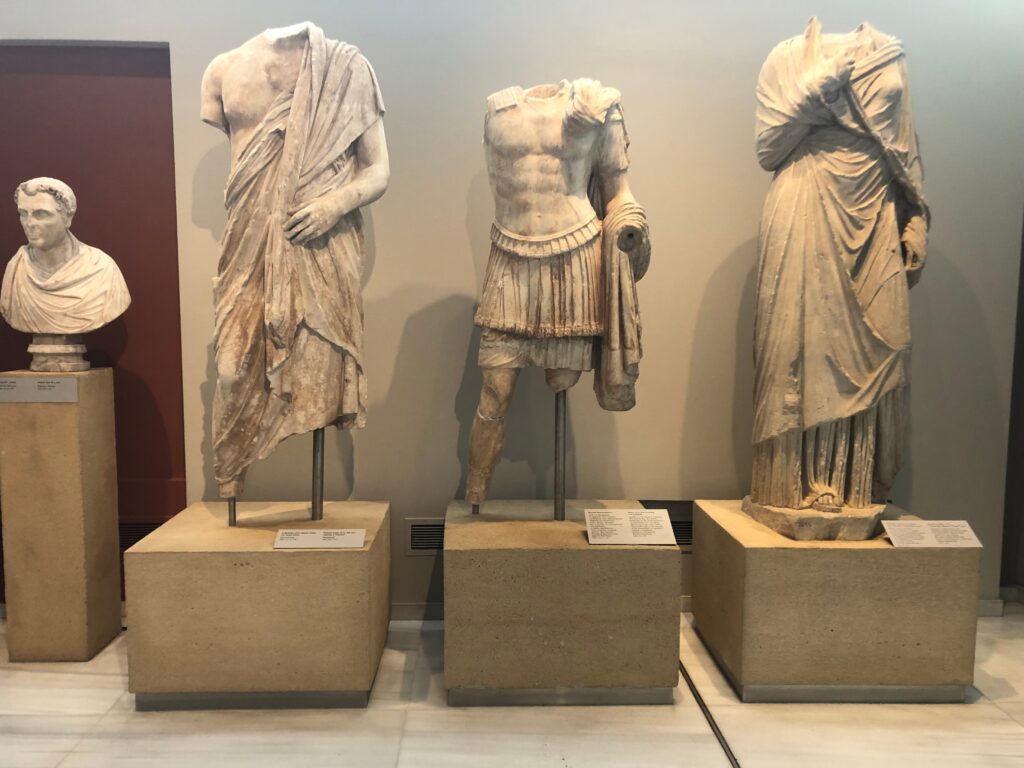
The Thessaloniki Archaeological Museum was once known for housing the treasures of Vergina, where the tomb of Philip II of Macedonia was found. In 1998, this collection was withdrawn from the museum, but it remains rich in interesting objects, notably from Macedonian necropolises . At the far right of the hall, in room 7, an example of a Macedonian tomb with funerary material (Aghia Paraskevi). On the right wall, the remains of the 4th-century BC marble tomb of Potidae, discovered in 1984, can be admired, with its painted decoration depicting Dionysian scenes. At the far end, to the left of the hall, in Room 1, is the superb funerary stele of Agenor, dating from the 5th century BC. Rooms 2 and 3 present a collection of Archaic, Classical and Hellenistic works (7th to 5th centuries BC). Room 4 is devoted to the Hellenistic and Roman periods. Rooms 5 and 6 are entirely dedicated to the Roman period, and feature a number of sculptures and portraits of emperors. At the far end of room 6 are the remains of a sarcophagus decorated with epic and mythological scenes. Room 9 is dedicated to the gold treasures of Macedonia.
8. Umbrella sculpture
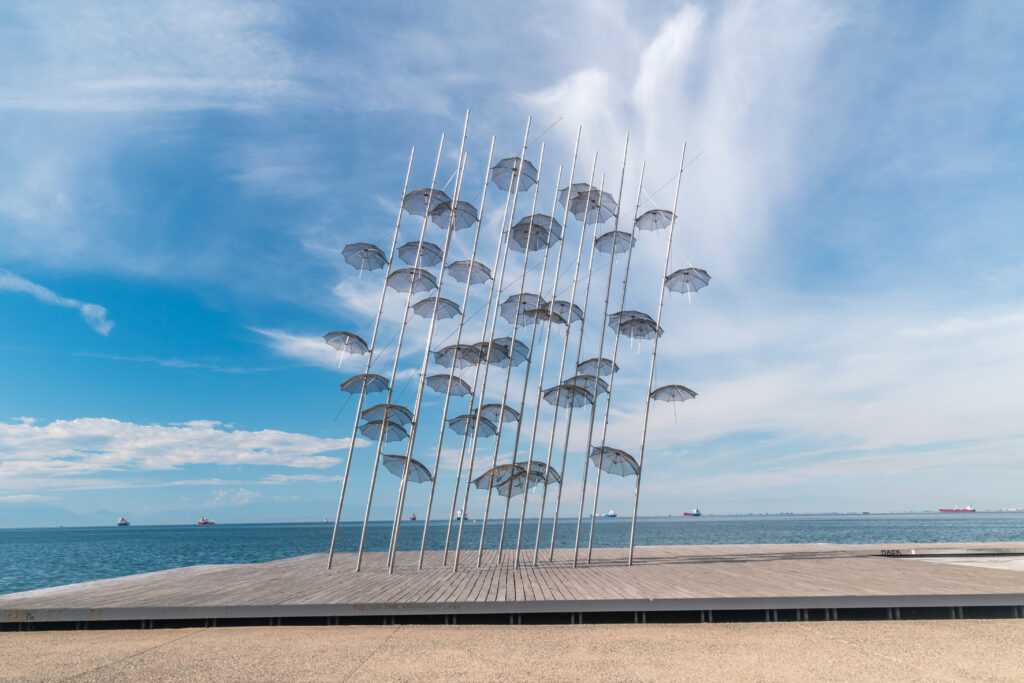
The Umbrella Sculpture, beautifully illuminated after dark, is certainly the most photographed monument in Thessaloniki, both by day and by night, relegating the nearby White Tower and the imposing statue of Alexander the Great to the background! In a poetic atmosphere, tourists and locals alike let their creativity run riot, having fun and dancing around this work of art. Created in 1997 - the year Thessaloniki was designated "European Capital of Culture" - this 13-metre-high installation of 40 stainless steel umbrellas and poles is the work of Athenian artist Giorgos Zangolopoulos. A must-see!
Discover all the must-see places in Thessaloniki by booking this guided bike tour of the city.
9. What to do in Thessaloniki Visit Agia Sofias Church
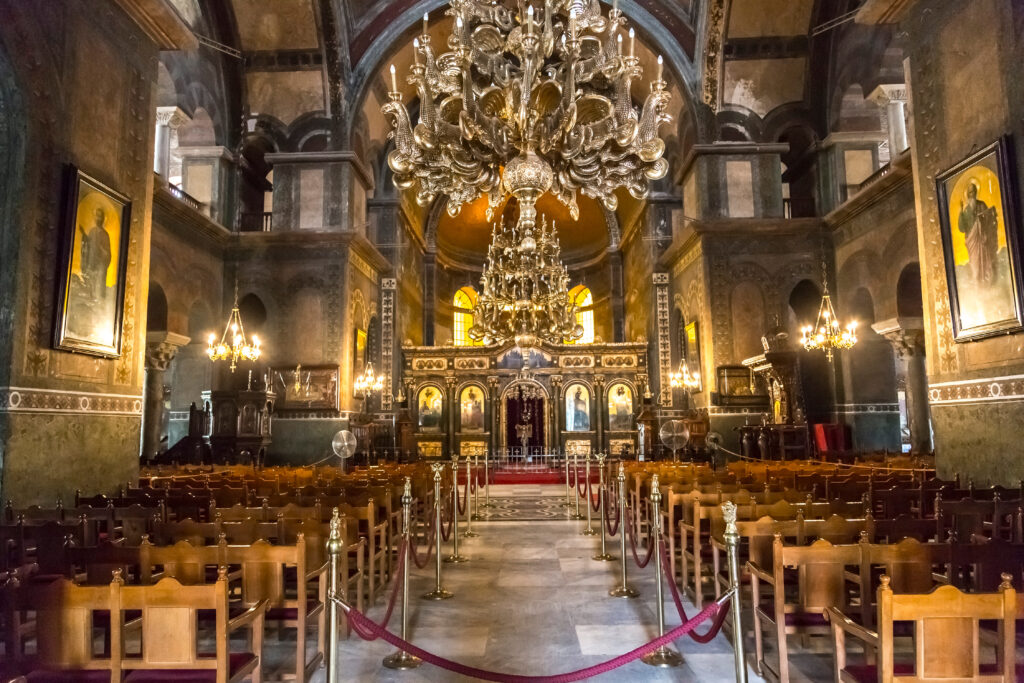
On rue Sainte-Sophie, between rue Egnatia and Tsimiski, next to the flea market district. Agia Sofias, or Saint Sophia Church, with its three naves and square plan, is one of the most imposing buildings in the medieval city. It was built in the 7th century on the ruins of a large monumental basilica with five naves, destroyed by an earthquake. Architecturally, the church seems to mark a transition between the domed basilica and the cross-shaped church, judging by the architectural imperfections that characterize it. For example, the base of the large dome is not exactly circular, but almost square. Transformed into a mosque in 1585, it was severely damaged by fire in 1890 and rebuilt by the Turks. In 1912, it was returned to Christian worship.
10. Relaxing on the beaches of Chalkidiki
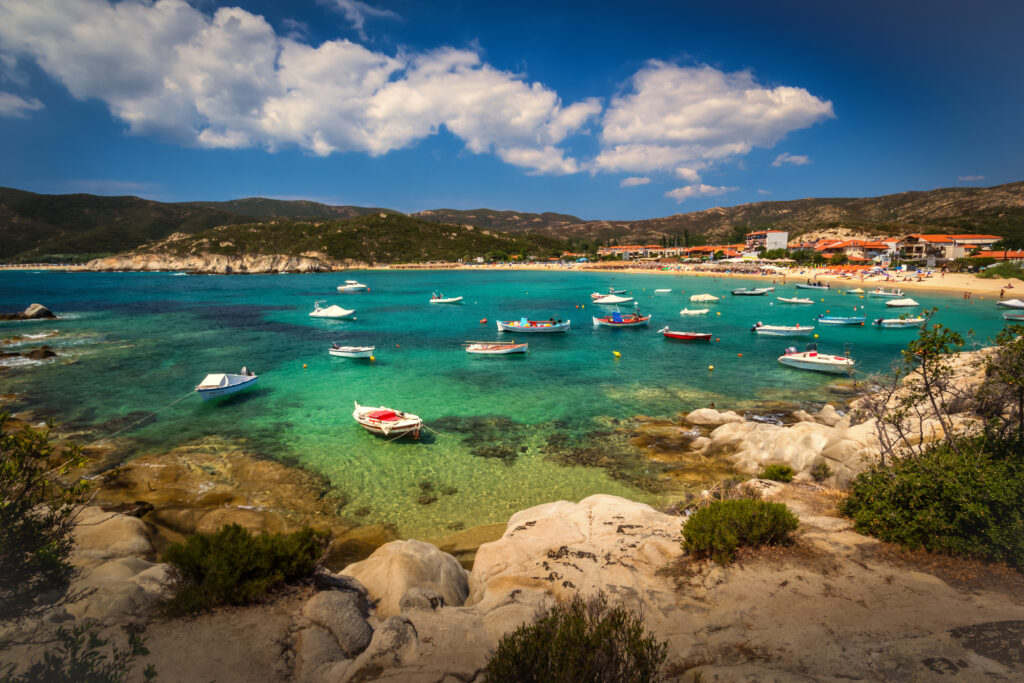
The Chalkidiki region is renowned for its magnificent, endless sandy beaches. Lovers of big hotels and huge resorts will find a wide choice here, and camping fanatics will find no shortage of wild or organized spots to pitch their tents. Each of these three fingers has its own particularity and history: Cassandra is the Greeks' favorite vacation spot, Sithonia attracts more European or American tourists along its beaches, while Mount Athos is a sacred peninsula rich in monasteries with particularly difficult access. Finally, Chalkidiki is a rather expensive region. But the big resorts are not as unaffordable as they seem, and your real problem will be finding room, especially in summer!
11. What to do in Thessaloniki? Enjoy a gastronomic capital

Often referred to as the country's gastronomic capital for its openness to the Balkans and the aromas of Anatolia, Thessaloniki offers a wide choice of restaurants, gastronomies and culinary experiences. For here, history, culture and heritage are also undoubtedly to be found on the plate. Among the local specialities, you'll often start the day with a koulouri, a ring of bread covered in sesame seeds, sold by one of the city's street vendors. You may also be tempted by a bougatsa , a northern Greek specialty made from phyllo dough and filled with a variety of ingredients, from cheese and meat to chocolate and custard (the most popular, perfect for a late-morning snack). In Thessaloniki, you can eat well, in a variety of ways and at all prices!
And the best way to discover Greek cuisine is to book an originalimmersive experience here: you'll spend an evening with a Greek family and learn how to cook typical Greek dishes.
12. Dynamic nightlife

Thessaloniki may be second in size only to Athens, but the city enjoys a vibrant nightlife. On Fridays and Saturdays, the first drinks are at the table and then in the bars from 10-11pm, until 2am-3am. Then it's off to the nightclubs until the wee hours of the morning. In summer, young Greeks go out every day in top form, since afternoon siestas are de rigueur. But in winter, and during the week, it's all about culture, as the capital has no shortage of entertainment venues: how about an exhibition or a music concert at Café Prigipos? Or a classical recital at the Mousiki Megaro? Not to mention the prestigious film and documentary festivals, which alone justify a trip to Thessaloniki... Not forgetting, of course, the absolute must in summer: an open-air cinema with a view, at Ciné Apollon..
13. What to do in Thessaloniki? A shopping spree
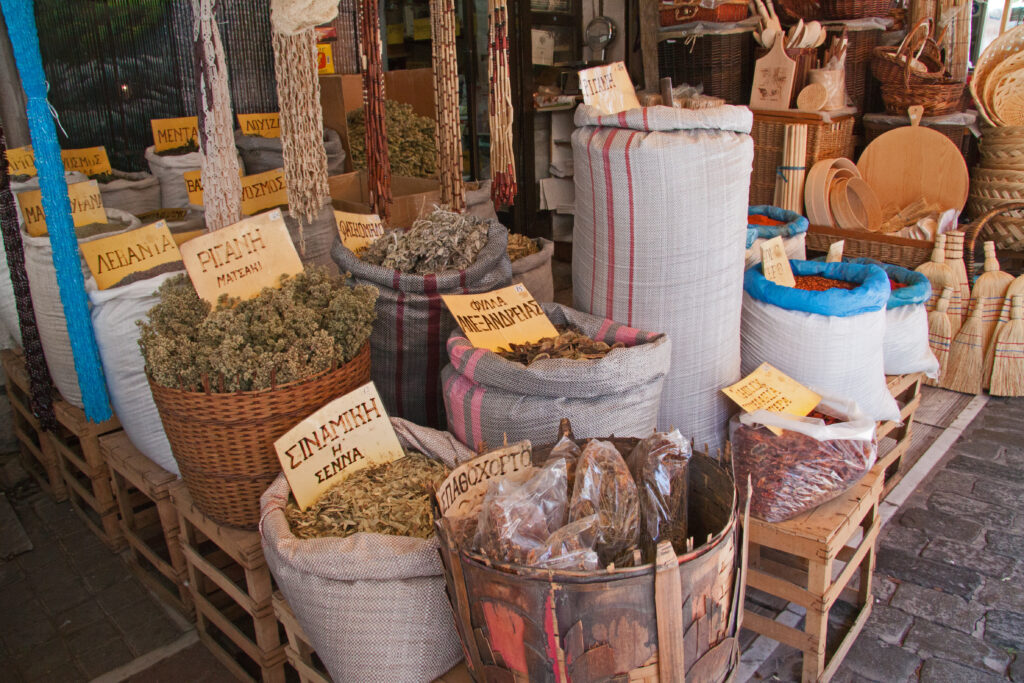
You need to be able to spot these small stores, sometimes slightly underground, which offer something other than the same old trinkets (mostly imported, with only a pale Greek illustration). Special mention should be made of the delightful In Thessaloniki, hidden away in the Navarinou district: we love its slightly offbeat productions, to give as gifts, or which we often want to keep for ourselves. There are also a handful of local clothing designers to delight you. But if you come to Thessaloniki, it's also often to bring back a few gastronomic souvenirs. As well as tsai tou vounou (mountain tea, cheap and light), you can stock up on nuts, honey and jams. And above all, if your luggage allows it, take a bottle of xynomavro ("black and acid" in Greek), one of the rarest and noblest red grapes in the world, native to north-western Greece.
Where to stay in Thessalonica?
Hotels are mostly concentrated around Aristotelous Square, near the waterfront, the port and within walking distance of the most beautiful sites and museums. Unlike the islands, there are no rooms for rent in Thessaloniki. However, there is a plethora of apartments to rent.
- The cheapest: HOTEL ORESTIAS KASTORIAS
This small hotel with an elegant neoclassical façade offers 37 rooms at very attractive rates, which you can book right here. The rooms are decorated in a modern style, but with period photos of the city to take you back in time!
- family-friendly: THE CARAVAN B&B
Located in the heart of the city, The Caravan is ideal for getting close to the hustle and bustle. Housed in a historic 1929 building, the atmosphere is friendly, relaxed and convivial. Click here to book your stay.
- The most luxurious: HÔTEL ELECTRA PALACE
Luxury at its most luxurious - that's the promise of the Electra Palace! For more than 50 years, this neo-Byzantine 5-star palace has reigned supreme over Aristotelous Square. Tempted? Check rates and availabilityhere .
How do I get to Meteora from Thessaloniki?
Located near the town of Kalambaka, Meteora is a group of impressive rock formations at dizzying heights. What makes the Meteora even more remarkable is thepresence of monasteries built on top of these rocks. Some six hundred years ago, Orthodox monks sought a secluded spot to meditate and pray, and found Meteora ideal for the purpose. They built monasteries on these rocks, initially accessible only by ladders and winches. Today, six active monasteries remain , accessible via staircases carved into the rock. Visiting Meteora from Thessaloniki is entirely possible, whether by organized tour or on your own. Here are a few options for getting to Meteora from Thessaloniki:
- The simplest, an organized excursion: Many travel agencies offer day trips to Meteora from Thessaloniki. These excursions usually include transport, a guide and entrance fees to the monasteries. Click here to book your guided day trip by bus to Meteora from Thessaloniki.
- Train: You can take a train from Thessaloniki to the town of Kalambaka, which is closest to Meteora. The journey takes around 3 hours. Once in Kalambaka, you can take a local bus or cab to Meteora.
- Bus: There are also buses from Thessaloniki to Kalambaka. The bus journey takes around 3-4 hours. As with the train, you'll need another means of transport to get to Meteora once in Kalambaka.
- Car: If you prefer greater flexibility, you can rent a car in Thessaloniki and drive to Meteora. The journey takes around 2 hours and 30 minutes. This allows you to visit the monasteries at your own pace.
What to do around Thessaloniki?
Macedonia is a huge crescent-shaped region, bordered by rivers, ridges, mountains, lakes, forests and many other natural frontiers, all of which are traces of an ecological environment unique to Greece. Far off the beaten track and away from the tourist hotspots, Macedonia strives to defend the treasures that adorn its lands. Around Thessalonica, a destination where the sun is still shining in November, spiritual seekers can discover their point of origin in the monasteries of Mount Athos (unfortunately still forbidden to women...), in the third finger of Chalkidiki. In addition to the many archaeological sites in Central Macedonia, the region abounds in natural areas such as the lake district in the north-west, or Mount Olympus, the home of the Greek gods. Towards Eastern Macedonia, you can already smell the oriental fragrance. And don't miss the chance to relax on the beaches of Chalkidiki.
Here are some of the most popular things to do in Thessaloniki:


